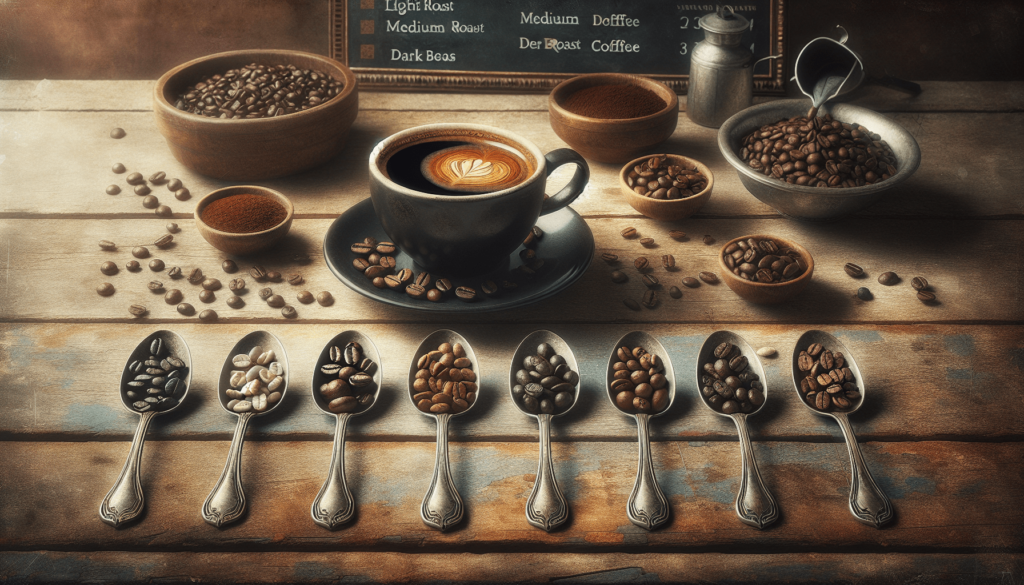Have you ever wondered what makes your morning coffee so special? Whether you’re a seasoned coffee aficionado or someone who just loves a good cup of joe to start the day, tasting coffee is both an art and a science. Coffee isn’t just about the caffeine; it’s about the flavors, aromas, and unique characteristics that each cup holds. There are four main ways to taste coffee, and understanding them can elevate your coffee experience to new heights.
The Four Ways to Taste Coffee
When it comes to tasting coffee, there are four main methods that you should focus on: cupping, smelling, slurping, and noting. Each method offers its own insights into the complex flavors and aromas of the coffee bean.
1. Cupping
Cupping is a standard practice in the coffee industry used by professionals to evaluate different coffees side by side. During cupping, you will typically use a uniform method to brew multiple samples. This process helps you to systematically compare the tastes, aromas, and textures.
To start with cupping, you’ll need:
- Freshly roasted coffee beans
- A grinder
- Hot water
- Cupping bowls and spoons
Here’s a simple step-by-step guide on how to cup coffee:
- Grind the Beans: Coarse grind the coffee beans and place them into cupping bowls.
- Add Hot Water: Pour hot water over the grounds and let them steep for about 4 minutes.
- Break the Crust: Using a spoon, break the crust of grounds that have formed on the surface, and take a good sniff.
- Taste: Once the coffee has cooled a bit, use your spoon to slurp the coffee, which helps distribute it across your palate.
2. Smelling
Before you even take your first sip, your nose will play a crucial role in the coffee-tasting experience. Smelling allows you to detect the various aromas that coffee emits. These scents are often categorized into three groups: dry, breaking, and wet aromas.
- Dry Aromas: Smell the freshly ground coffee before adding water.
- Breaking Aromas: Smell the coffee as you break the crust during the cupping process.
- Wet Aromas: Inhale deeply after the coffee has brewed for a while and started to cool down.
Take your time to savor the different scents. You may detect fruity, floral, nutty, or even chocolatey notes, depending on the coffee bean.
3. Slurping
Slurping coffee is not just about making noise; it’s a technique used to aerate the coffee. When you slurp, you spray the coffee across your palate, allowing you to taste a full range of flavors. To do this:
- Take a spoonful of coffee and slurp it quickly.
- Let the coffee spread around your mouth.
- Pay attention to different taste sensations such as sweetness, acidity, bitterness, and body.
4. Noting
The final step in tasting coffee is to take notes on what you experience. This is where you can be as detailed as possible. Keeping a coffee journal can be particularly useful. Note down aspects such as:
- Acidity: Is it bright and tangy or dull and flat?
- Sweetness: Natural sweetness can vary greatly. Does it taste like fruits or caramel?
- Bitterness: Moderate bit of bitterness can balance the flavor. Is it overbearing or pleasant?
- Body: The weight of the coffee on your tongue—does it feel light or heavy?
- Aftertaste: How does the coffee taste after you’ve swallowed it?
| Aspect | Description | Tips for Noting |
|---|---|---|
| Acidity | Bright, Tangy, Dull, Flat | Compare to citrus fruits or wines |
| Sweetness | Fruity, Sugary, Caramel-like | Use comparative food items |
| Bitterness | Overbearing, Pleasant, Harsh | Reflect on chocolate or beer |
| Body | Light, Heavy, Creamy, Watery | Think about the feel on your tongue |
| Aftertaste | Long-lasting, Short, Pleasant, Unpleasant | Focus on lasting flavors |
Understanding Coffee Flavors
Each coffee bean has its own set of complex flavors determined by its origin, processing method, and how it’s roasted. Origin plays a significant role, as the geographical conditions affect the taste-profile of the coffee.
Geographical Influence
Understanding the region where the coffee was grown can give you a clue about what to expect in terms of flavor.
- Africa: Coffees from African countries like Ethiopia and Kenya are often bright, fruity, and floral.
- South America: Colombian and Brazilian coffees are generally well-balanced with nutty and chocolatey notes.
- Asia: Coffees from Indonesia and India may exhibit earthy and spicy characteristics.
Processing Methods
The method used to process coffee cherries can significantly influence the flavor of the final product.
- Washed: Clean and bright flavors, generally with a higher acidity.
- Natural: Fruity and heavy, often with a wine-like complexity.
- Honey: A middle ground between washed and natural processing, offering a balanced yet sweet profile.
Roasting Levels
Different roasting levels can also change the flavor profile of the coffee.
| Roast Level | Characteristics |
|---|---|
| Light Roast | High acidity, fruity flavors, light body |
| Medium Roast | Balanced acidity, more sweetness, fuller body |
| Dark Roast | Low acidity, bitter-sweet chocolate flavors, heavier body |

Practical Tips for Enhancing Your Tasting Experience
Tasting coffee is more than just a mechanical act; it’s a sensory experience that can be continually refined. Here are some practical tips to make the most of your coffee-tasting adventures:
Environmental Factors
Make sure that your tasting environment is free from competing smells and distractions. A neutral, quiet space can greatly enhance your ability to focus on the coffee itself.
Use Fresh Ingredients
Always use freshly roasted beans and make sure your water is clean and free from any off-flavors. The freshness and quality of ingredients can make a significant difference in your tasting experience.
Practice Regularly
Like any skill, improving your coffee tasting abilities requires regular practice. Even if you’re not a professional, make time to taste different coffees, compare notes, and refine your technique.
Conclusion
Unlocking the secrets of coffee tasting requires a blend of science and art. Through cupping, smelling, slurping, and noting, you can deepen your appreciation for the complexities of each cup. By understanding how geographical origin, processing methods, and roasting levels influence flavor, you’ll be better equipped to identify and enjoy the myriad of tastes that coffee has to offer. So next time you take a sip, take a moment to appreciate the intricate journey from bean to cup.

